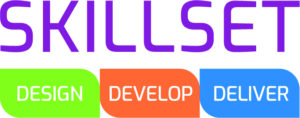
Boosting Learner Engagement In eLearning With Top Tips And Strategies
In today’s fast-paced world, eLearning has become an essential tool for organizations of all sizes, whether for compliance training or introducing new technologies to employees. To ensure that eLearning is not only effective but also engaging, it’s crucial to design courses that captivate and motivate learners. In this article, I have considered five key strategies to enhance learner engagement in your eLearning programs.
Key Strategies For Enhancing Learner Engagement
1. Ensure Clear Navigation Throughout The Course
Effective eLearning is grounded in a well-structured course layout that guides learners through their educational journey. To support learners as they progress, your courses should feature:
- Clear navigation prompts
Include indicators on each page that inform learners of their current position within the course. For example, display progress such as “You have completed 4 out of 12 lessons.” - Progress bars
Place a visual progress bar at the top of each page to show how many lessons are remaining, such as “5 out of 12.” - Activity logs
Provide logs where learners can review their completed tasks, see what’s next, and assess their overall progress, such as “You have completed 1/3 of all tasks in this course.”
These elements make the learning process transparent and help learners stay on track.
2. Incorporate Motion Graphics And Animated Videos
Videos are a powerful tool for capturing learners’ attention and enhancing engagement. They stimulate both visual and auditory senses, creating a richer learning experience when compared to static content. By including animated videos or motion graphics, you can:
- Demonstrate real-world applications
Videos can illustrate how concepts apply in real-life scenarios, providing a practical understanding of the material. - Simplify complex information
Animated content can break down intricate topics into easily digestible segments, making them more accessible.
For example, animation can be particularly useful for explaining complex technical processes or concepts. This approach helps the learner visualize and grasp difficult subjects more effectively.
3. Offer Flexible Learning Opportunities
A one-size-fits-all approach to eLearning often fails to engage diverse learners. To address this, consider expanding your course offerings to include a range of optional modules. This could include:
- Additional skills courses
Offer courses on topics such as Microsoft Office, presentation skills, or leadership, that learners can choose based on their interests. - Self-paced learning
Allow employees to access these courses at their convenience, which can lead to higher engagement and motivation.
This flexibility not only encourages learners to take ownership of their educational journey but also helps to tailor the learning experience to an individual’s needs. In addition, monitoring course enrolment and progress can help in developing a skills matrix for future training initiatives.
4. Provide A Sense Of Achievement
Acknowledging and rewarding progress is key to keeping learners motivated. Consider implementing the following:
- Feedback and scores
Give constructive feedback and scores for assignments and quizzes to help learners understand their performance. - Certificates and badges
Award certificates upon course completion and use badges to recognize specific achievements. Badges are versatile and can be used to mark various milestones within the course. - Experience points and leaderboards
Introduce experience points for completing tasks and use leaderboards to foster a sense of competition and achievement among learners.
These rewards provide tangible proof of progress and can boost learners’ morale and enthusiasm for further learning opportunities.
5. Implement Real-World Exercises And Simulations
Active learning through practical exercises significantly enhances retention and understanding. Instead of solely relying on theoretical content, incorporate:
- Simulations
Create interactive simulations that mimic real-life scenarios. Allow learners to make decisions, experience outcomes, and receive feedback. - Practice opportunities
Provide chances for learners to experiment and learn from their mistakes in a controlled environment.
This approach helps learners apply what they’ve learned in a practical context, making the training more relevant and memorable.
Conclusion
Enhancing learner engagement in eLearning requires a thoughtful approach to course design and delivery. By ensuring clear navigation, incorporating engaging multimedia, offering flexible learning options, recognizing achievements, and including practical exercises, you can create a dynamic and effective learning experience. These strategies not only make eLearning more enjoyable but also ensure that learners retain and apply their new knowledge effectively.
If you’re looking to improve your eLearning programs and engage your learners more effectively, consider implementing these strategies to create a more impactful and enjoyable learning experience.
